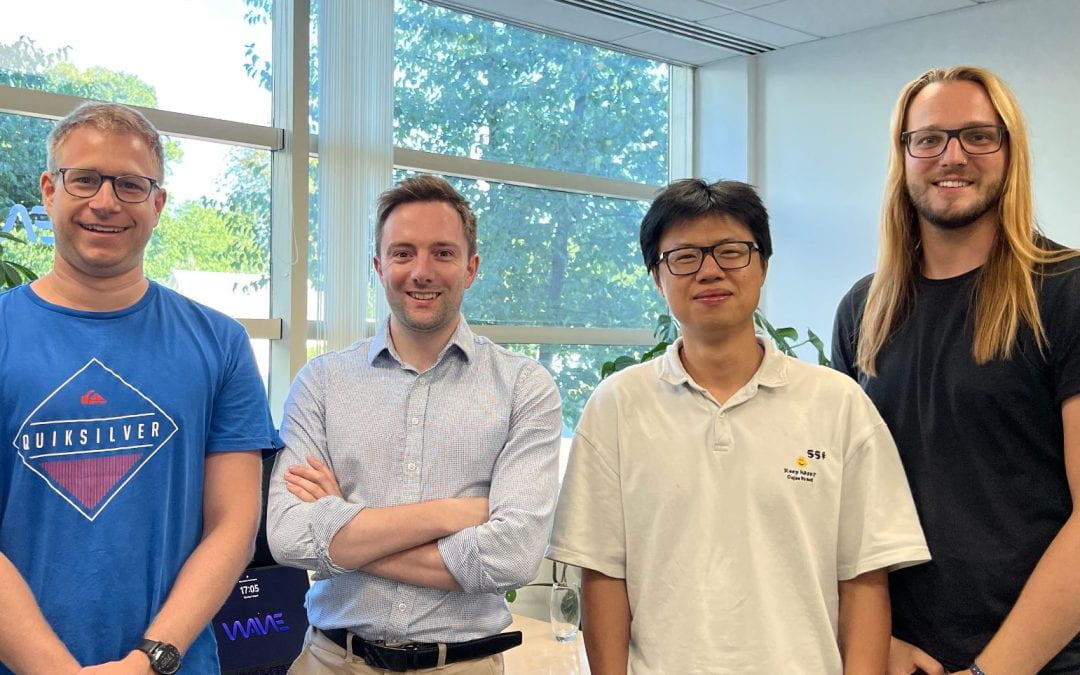UK-based company Wave Photonics is working to solve a problem that impacts a broad range of technology fields: streamlining integrated photonics component design.
When he first learned about photonic integrated chip production during his PhD at the University of Cambridge, cofounder and CEO James Lee was shocked at how inefficient the process is compared to electronic chip manufacturing. “At the moment, you go to a foundry, and for electronics, they have a really expansive library of IP that you can use,” he explained. “For photonics, they either don’t have a library at all, or if they do, it’s not really good, or it’s only for a small range of wavelengths. And so silicon photonics companies spend ages designing these components themselves. It’s years of work, and it’s very expensive.”
Integrated photonics chips can be used for many of the same applications as integrated electronics with significantly reduced power consumption. They also play a key role in fiber optics-based communication and sensing, as well as upcoming technologies in lidar, consumer healthcare, and quantum computing and communication. Even though the technology is beginning to be widely deployed, especially in datacenters, the development process is still slow and iterative.
Lee became convinced that computational design could improve this process. “I thought it was obvious that this was going to change how the industry worked,” he said, regarding his early encounters with computational design photonics. “In my evenings and weekends after my PhD, I started playing around with the computational design side of things and thought, it’s been several years since this area started, and it hasn’t really changed the industry in a way that it should.” Now, he hopes to address the disconnect with Wave Photonics’s design optimization services.
To achieve this vision, he joined forces with CSO Matthew Anderson and CTO Mateusz Kubica, who bring expertise in photonics and quantitative development, respectively. Using iterative process characterization and optimization algorithms, Wave Photonics develops foundry-specific component designs. The computational approach allows the company to adjust designs for specific factors like fabrication limitations, bandwidth and wavelength range without having to start from scratch, which saves significant amounts of time and money.
The ability to efficiently fine-tune photonics chips has exciting implications for quantum development. “The first use cases for unusual wavelengths or for times when low losses are needed – that’s useful for several quantum applications,” said Lee.
A major use case is securely exchanging quantum encryption keys across fiber optics channels, a process known as quantum key distribution (QKD). The company developed a passive, chip-based QKD encryption scheme for an Innovate UK Quantum Technologies Germinator project earlier this year. At present, they are working with Cardiff University, Compound Semiconductor Applications Catapult, and KETS Quantum Security to develop a library of photonics components for quantum research through another Innovate UK project.
Lee hopes to maintain this momentum by plugging into the Chicago quantum scene through Duality. “The business development opportunities are the strongest benefit of Duality for us at our current stage. A quantum technology accelerator is a very good way to expand our network into other companies in the space,” he said.
Long-term, he believes Wave Photonics will have a positive impact on quantum research by introducing integrated chip technology on a broader scale. “The hope is it accelerates the research, but also makes it accessible to areas of quantum technology that use photonics but don’t use integrated photonics at the moment,” he explained. “Being able to make small, phase-stable, scalable, low-loss circuits without hundreds of thousands in development costs for each one, that would help.”

